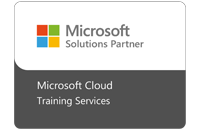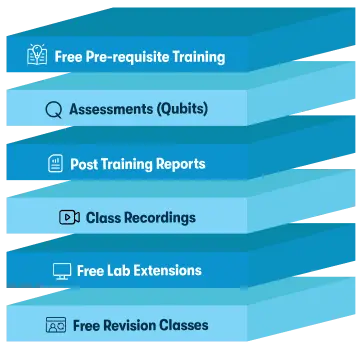We're open through the holidays to support your upskilling goals — Which training do you want to book?
We're open through the holidays to support your upskilling goals — Which training do you want to book?
Unable to find what you're searching for?
We're here to help you find itPL-900T00-A: Introduction to Microsoft Power Platform Course Overview
Microsoft Power Platform continues to define the enterprise low-code application development landscape, establishing itself as the cornerstone technology for digital transformation initiatives worldwide. Microsoft has again been named a Leader in the 2025 Gartner® Magic Quadrant™ for Enterprise Low-Code Application Platforms (LCAP). This is the seventh consecutive time we have been named a Leader in this Magic Quadrant™.
For IT professionals, business users, and organizations seeking to harness the power of low-code development, understanding Microsoft Power Platform fundamentals has become essential. The PL-900 Microsoft Power Platform training provides the foundational knowledge required to navigate this transformative technology ecosystem effectively.
Microsoft's position in the low-code application platform market reflects sustained excellence and innovation. Microsoft has been named a Leader in the 2024 Gartner® Magic Quadrant™ for Enterprise Low-Code Application Platforms for the sixth year in a row. This recognition, we feel, reflects the trust of millions of users who continue to build on Microsoft Power Platform—a comprehensive low-code solution that spans application development, process automation, external websites, and intelligent copilots.
This achievement places Microsoft ahead of competitors in both execution capability and strategic vision, positioning Power Platform as the preferred choice for enterprise digital transformation initiatives.
Microsoft Power Platform today is comprised of: Power BI, Power Apps, Power Pages, Power Automate, Microsoft Copilot Studio, and AI Builder. Each component addresses specific business challenges while maintaining seamless integration across the platform.
Power Apps: Application Development Revolution Apps created with Power Apps can be shared with internal users and can be run in a browser or on a mobile device. You can create following types of apps: canvas and model-driven. This flexibility enables organizations to address diverse user requirements through unified development approaches.
Power Automate: Process Automation Excellence Power Automate is used to automate tasks and orchestrate activities across various services that use integrated or custom connectors. Using Power Automate you can create cloud flows or desktop flows.
Microsoft Dataverse: Enterprise Data Foundation Dataverse is a cloud scale data store that builds on Microsoft's data technologies and abstracts away data management complexity from the app maker. It lets you securely store and manage data that is used by business applications. Business data within Dataverse is stored within a set of data tables.
Power Platform's strength lies in its native integration with Microsoft 365, Azure, and Dynamics 365. For customers who already have an Office 365 tenant, everything you need to get started is already in place. Environments are the logical containers used by Power Platform created under your Azure Active Directory (AAD) tenant. As part of your tenant, it builds on everything you already have setup with AAD to manage users, groups, policies, authentication methods, audit logs, and services.
Modern organizations face significant development challenges. Traditional software development may not move fast enough today to match the speed of change in business. A common development bottleneck for many organizations is the long lead time required to research, write, and test new code. A worldwide shortage of development talent compounds this problem. [7]
Only 13% of employers say they are able to hire and retain the tech talent they need. The vast majority of organizations, then, are going without the IT resources necessary to run their operations optimally.
Successful Power Platform deployment requires structured implementation approaches:
1. System Integration Strategy Once you've acquired a low-code software development platform that meets your requirements, follow these best practices to integrate it into your existing tech stack. Evaluate existing systems. Perhaps your new low-code development platform can replace one or more other systems you have in place.
2. Development Process Evolution Implement a new development approach. Low-code platforms make app development accessible to employees beyond the IT team. Ensure the IT team controls the development process with new safeguards, roles, responsibilities, and procedures, if needed. Some organizations may need to implement a different software development life cycle approach to match the speed and agility of low-code development.
3. Governance and Security Framework Appoint platform administrators, identify users, and conduct training sessions. Ensure that everyone who will use the platform receives the proper training on both the tool itself as well as the internal process for ideating, building, testing, and approving apps. Configure settings. Establish all necessary authentication processes, security settings, and integrations. Conduct a security review. Make sure your settings meet all enterprise security requirements.
Successfully delivered 359 sessions for over 6,816 professionals
Purchase This Course
USD
View Fees Breakdown
| Course Fee | 850 |
| Exam Fee | 100 |
|
Total Fees (without exam) |
850 (USD) |
USD
View Fees Breakdown
| Course Fee | 650 |
| Exam Fee | 100 |
|
Total Fees (without exam) |
650 (USD) |
USD
View Fees Breakdown
| Flexi Video | 16,449 |
| Official E-coursebook | |
| Exam Voucher (optional) | |
| Hands-On-Labs2 | 4,159 |
| + GST 18% | 4,259 |
|
Total Fees (without exam & Labs) |
22,359 (INR) |
|
Total Fees (with Labs) |
28,359 (INR) |
Select Time
Select Date
| Day | Time |
|---|---|
|
to
|
to |
♱ Excluding VAT/GST
You can request classroom training in any city on any date by Requesting More Information
Inclusions in Koenig's Learning Stack may vary as per policies of OEMs
Scroll to view more course dates
You can request classroom training in any city on any date by Requesting More Information
♱ Excluding VAT/GST
*Inclusions in Koenig's Learning Stack may vary as per policies of OEMs
PL-900T00-A: Introduction to Microsoft Power Platform
Suggestion submitted successfully.
Koenig Learning Stack
Inclusions in Koenig's Learning Stack may vary as per policies of OEMs



